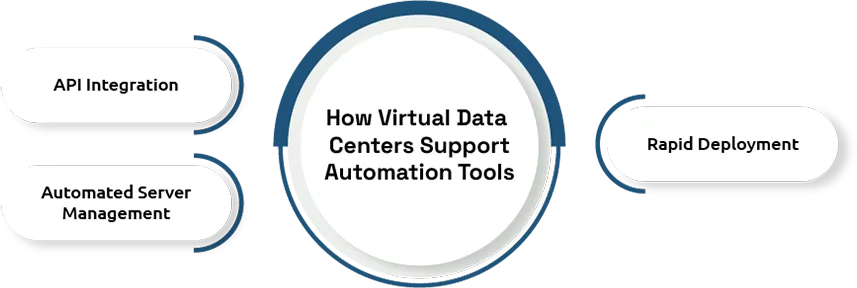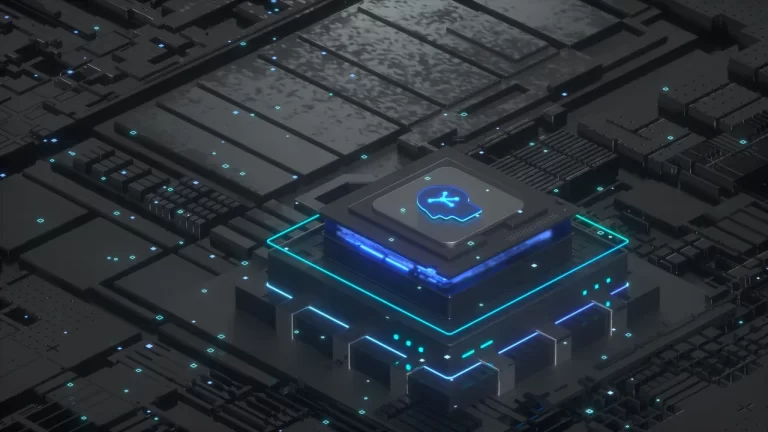Virtual data centers function as cloud-based resource pools that the software administrator oversees rather than conventional hardware management systems. Categorically equivalent to physical data centers, these resources function from online locations, and users can connect remotely. Businesses can access strong computer capabilities through the cloud without needing to acquire or manage costly hardware equipment.
Automation in data centers refers to the process where computer software tools perform unmonitored operations such as backups and updates on resource management within a data facility. Virtual data centers enhance automation systems through improved flexibility, together with speed and efficiency. This piece examines data center automation tools and their essential role in modern business structure.
What is a virtual data center?
The digital representation of an actual data center operates as a virtual data center. The system contains virtual servers together with storage facilities and networking components, which software manages. Users can operate these virtual components in the same manner as traditional hardware systems from cloud-based frameworks. The virtual elements make it easy for businesses to enlarge or reduce their capacity according to their current requirements.
Virtual data centers avoid the physical requirements of traditional data centers since they do not need space, cooling, and electricity demands. Businesses run their management operations through software tools; therefore, they can adjust their systems swiftly regardless of physical requirements.

Why Virtual Data Centers Help with Automation
Data center automation involves managing system monitoring along with updating and fixing tasks through software-based solutions. Virtual data centers help automation efforts due to their complete software infrastructure. Automation technologies enable users to complete tasks that previously needed hours of manual time to finish in just minutes.
Virtual data centers complement the functionality of modern technologies, including artificial intelligence (AI) and machine learning (ML) Data prediction through automated tools allows systems to fix themselves before issues occur. The automation system minimizes errors while shortening process length and eliminating many human-operated tasks.
How Virtual Data Centers Support Automation Tools
Most of the automation tools can just integrate with the virtual data center via API (an application programming interface)—a way for applications to communicate with other applications. This means there are means to develop scripts that can automatically create servers, allocate storage, or change their settings, and no one has to push any buttons. This feature benefits business organizations that require both fast processing of their services and the decision-making power to say yes or no to the transaction.
Another implication of virtual data centers is flexibility in the use of new software to test the market before implementation. It’s possible to create a replica of the setup in minutes, then experiment and transfer the changes without risk. This renders value to the contemporary IT concern as well as ensures that necessary services are provided without any hitches.

Types of Automation in Virtual Data Centers
In a virtual data center, there are different forms of automation as listed below: There is resource management according to the demand, which can set regulation parameters of CPU, memory, and storage. Another is security automation, which prevents threats from being accepted or applied updates without the help of IT staff.
Other types are backup, to ensure normal and safe copying of data, and deployment, for fast delivery of new applications or updates. These types assist in bringing down the time that is taken and increasing the efficiency, especially in companies that employ large IT systems.
Benefits and Challenges of Virtual Data Center Automation
Advantages of virtual data centers with the help of robotic systems are increased speed of work, no more mistakes, and the necessary minimization of costs. It also frees up the IT team to do other useful work instead of attending to a repetitive role on a daily basis. It can also enhance security by updating itself and looking for any threats that exist on the computer.
However, there are also challenges. Automation has its prerequisite activities that need to be implemented to improve efficiency, and it requires considerable time. As seen from the case, if not well implemented, then automation ushers in the problems at a faster rate than solutions to such problems. Also, teams require professionals to be in charge of administering computers and other related computer applications. However, if they are not trained and not supported or supervised, then it may cause them not to work as expected in the organization.








